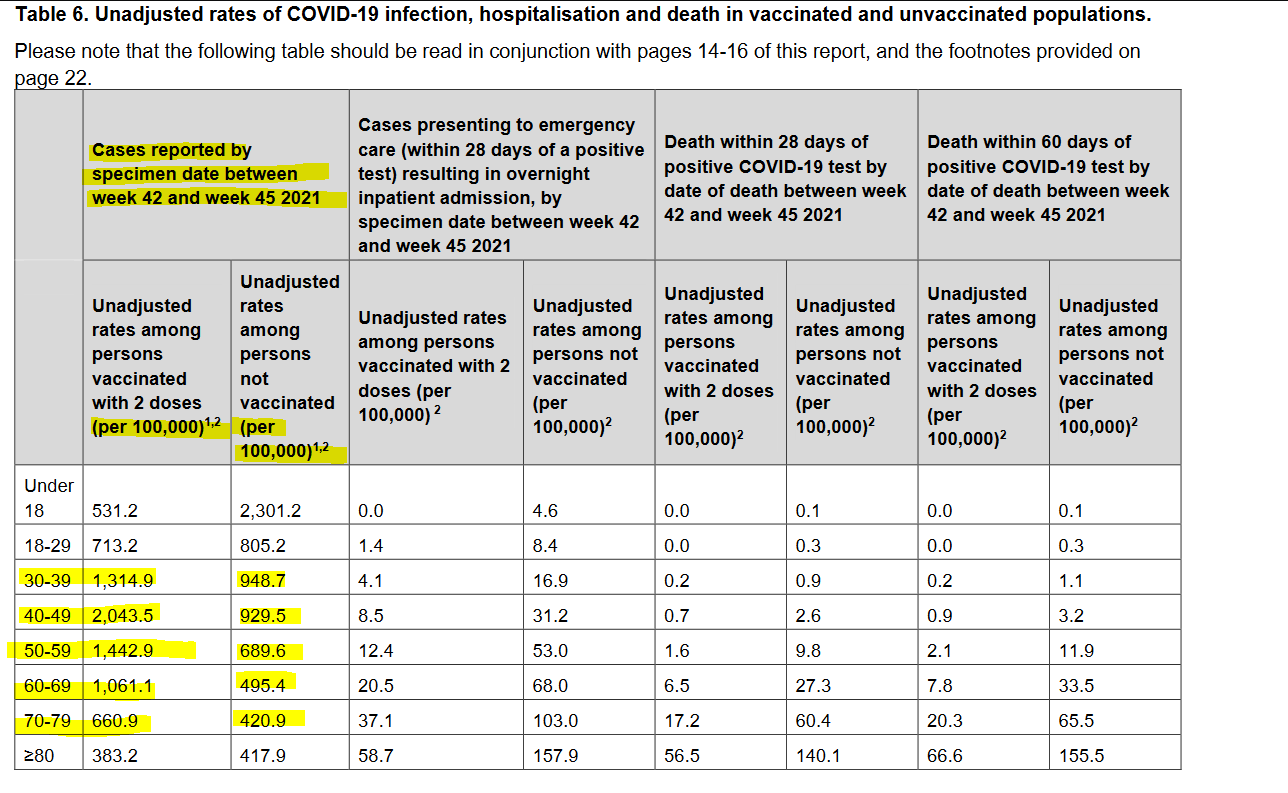^1^Comparing case rates among vaccinated and unvaccinated populations should not be used to estimate vaccine effectiveness
against COVID-19 infection. Vaccine effectiveness has been formally estimated from a number of different sources and is
summarised on pages 5 to 8 in this report.
The case rates in the vaccinated and unvaccinated populations are unadjusted crude rates that do not take into account underlying
statistical biases in the data and there are likely to be systematic differences between these 2 population groups. For example:
• people who are fully vaccinated may be more health conscious and therefore more likely to get tested for COVID-19 and so more likely to be identified as a case (based on the data provided by the NHS Test and Trace)
• many of those who were at the head of the queue for vaccination are those at higher risk from COVID-19 due to their age, their occupation, their family circumstances or because of underlying health issues
• people who are fully vaccinated and people who are unvaccinated may behave differently, particularly with regard to social interactions and therefore may have differing levels of exposure to COVID-19
• people who have never been vaccinated are more likely to have caught COVID-19 in the weeks or months before the period of the cases covered in the report. This gives them some natural immunity to the virus for a few months which may have contributed to a lower case rate in the past few weeks
